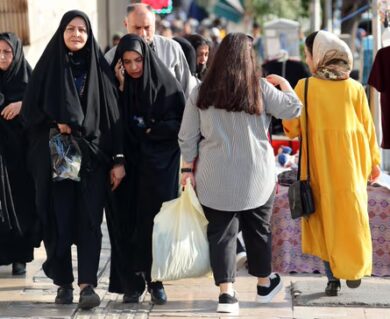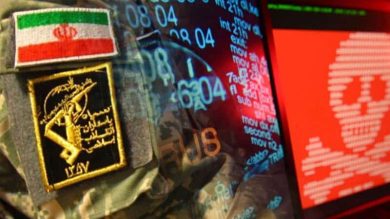Iran’s Generation Z—young women born in the late 1990s and 2000s—are at the forefront of the country’s ongoing struggle for freedom, human rights, and gender equality. Unlike previous generations, they have grown up digitally connected, politically aware, and unwilling to accept the repressive status quo enforced by the Islamic Republic and the IRGC (Islamic Revolutionary Guard Corps).
Their courage and defiance in the face of brutal crackdowns, imprisonment, and censorship have made them the driving force behind Iran’s latest wave of protests and activism. This new generation, inspired by “Women, Life, Freedom”, is not just demanding reform but calling for a fundamental transformation of Iran’s political and social structure.
This article explores:
• Why Iran’s Generation Z is different from past generations.
• How young women are leading the fight for change.
• The IRGC’s violent crackdown and its failed attempts to silence them.
• The role of social media and digital activism in their resistance.
• The global impact of their struggle and how the world can support them.
1. What Makes Iran’s Generation Z Different?
Unlike their parents and grandparents, Iran’s Gen Z has been shaped by technology, economic struggles, and state repression in a unique way:
A. Raised in Crisis, Born to Resist
• They have lived through economic hardships, sanctions, and political unrest, making them more critical of the government.
• The 2009 Green Movement, 2017-2019 protests, and the 2022 Mahsa Amini uprising shaped their political consciousness from a young age.
• Having never known a free Iran, they refuse to accept oppression as a way of life.
B. Digital Natives Fighting Censorship
• Unlike past generations, Gen Z grew up with the internet and social media, allowing them to:
✔ Access uncensored information.
✔ Organize protests and activism online.
✔ Share evidence of state brutality with the world.
• Despite IRGC-imposed internet blackouts, they use VPNs, encrypted apps, and digital strategies to bypass censorship.
C. Fearless and Unapologetic
• Unlike their elders, who often hoped for gradual reform, Gen Z demands immediate, radical change.
• They are less religious, more secular, and more progressive than previous generations.
• They see the IRGC, morality police, and ruling clerics as illegitimate and are willing to risk their lives to bring change.
⸻
2. How Young Women Are Leading the Fight for Change
A. The Face of the “Women, Life, Freedom” Movement
• The death of Mahsa Amini in 2022 for allegedly not wearing her hijab properly sparked massive protests led by young women.
• Unlike past movements, Gen Z women are at the forefront, fearlessly confronting security forces.
• They remove their hijabs in public, cut their hair, and chant anti-regime slogans despite knowing the risks.
B. Schoolgirls Defying the IRGC
• Teenage girls have made headlines for:
✔ Removing hijabs in classrooms.
✔ Confronting school officials who enforce religious dress codes.
✔ Kicking out pro-regime figures visiting their schools.
• This defiance is unprecedented in Iran’s history.
C. Leading in Journalism, Activism, and Human Rights
• Young women journalists, like Niloofar Hamedi, were among the first to expose Mahsa Amini’s death, leading to their arrest.
• Activists like Sepideh Gholian and students across universities continue to organize protests and underground resistance movements.
• Even athletes and artists have joined, refusing to wear hijabs in competitions or rejecting state-imposed restrictions.
3. The IRGC’s Brutal Crackdown on Generation Z
Despite the peaceful nature of their resistance, Iran’s security forces, led by the IRGC, have responded with extreme violence.
A. Arrests and Torture of Young Women
• Thousands of young women have been arrested and detained in IRGC-run prisons.
• Many report torture, sexual violence, and solitary confinement as punishment for protesting.
• Families of detainees face threats and intimidation to prevent them from speaking out.
B. School and University Raids
• The IRGC has raided universities, using live ammunition, tear gas, and mass detentions against students.
• Female students are especially targeted, with expulsions, forced confessions, and public beatings.
• The 2023 schoolgirl poisoning incidents—suspected attacks on girls’ schools—were widely seen as state retaliation for female-led activism.
C. Internet Blackouts and Surveillance
• The IRGC controls Iran’s cyber infrastructure, regularly shutting down the internet to block protests.
• AI-powered surveillance is used to identify and track young activists through social media posts.
• Despite this, Gen Z finds new ways to resist, using encrypted apps and international digital networks.
4. Social Media: The Weapon of Iran’s Gen Z
A. Digital Activism and Global Outreach
• Despite state censorship, young Iranian women use Instagram, Twitter, and Telegram to:
✔ Share videos of protests and state violence.
✔ Spread awareness globally using hashtags like #WomenLifeFreedom.
✔ Expose IRGC abuses to international audiences.
B. VPNs and Encrypted Messaging
• Gen Z bypasses censorship using:
✔ VPNs and proxy servers to access blocked content.
✔ Encrypted apps like Signal to communicate securely.
✔ Exiled Iranian activists to publish inside reports.
C. The IRGC’s Failed Attempts to Control the Narrative
• The IRGC has launched misinformation campaigns, trying to paint protesters as “foreign agents.”
• State-run media outlets push propaganda, but Gen Z Iranians trust independent sources and foreign-based Persian media like BBC Persian and Iran International.
• The digital age has made it nearly impossible for the IRGC to fully control information like in past uprisings.
5. The Global Impact of Iran’s Young Women
A. Inspiring Protests Worldwide
• The Iranian women-led movement has inspired:
✔ Feminist protests in Afghanistan, Syria, and beyond.
✔ Global demonstrations from New York to Berlin, with Iranian diaspora communities leading the charge.
✔ International women’s rights groups to prioritize Iran in their campaigns.
B. Calls for Stronger Sanctions Against the IRGC
• Many activists are demanding:
✔ The IRGC’s designation as a terrorist organization by the EU and Canada.
✔ Stronger human rights sanctions against officials involved in repression.
✔ Support for digital access so young activists can continue their work.
C. Iranian Gen Z Will Shape Iran’s Future
• Whether inside Iran or in exile, Iran’s young women are shaping the political and cultural future of their country.
• They reject the status quo and are laying the groundwork for a secular, democratic, and equal Iran.
6. How the World Can Support Iranian Gen Z Women
✔ Amplify Their Voices
• Share their stories on social media to prevent their struggle from being forgotten.
✔ Support Free Internet Access in Iran
• Governments and tech companies must provide VPNs and encryption tools for Iranians.
✔ Pressure Governments to Hold the IRGC Accountable
• Advocate for stronger sanctions and IRGC’s terrorist designation to weaken its power.
✔ Protect Iranian Women Refugees and Asylum Seekers
• Many young Iranian activists need safe asylum to escape persecution. Governments should prioritize their protection.
Conclusion: The Future Belongs to Iran’s Brave Young Women
Iran’s Generation Z women are proving to be unstoppable forces of change. Their resilience, intelligence, and digital savviness have made them the greatest challenge to the IRGC’s grip on power.
The battle for Iran’s future is happening now—and the women of Gen Z are leading the way.
Join Our Newsletter!
Stay informed with the latest updates, news, and ways to take action in the fight for justice and global security. Sign up now to get updates delivered straight to your inbox!





